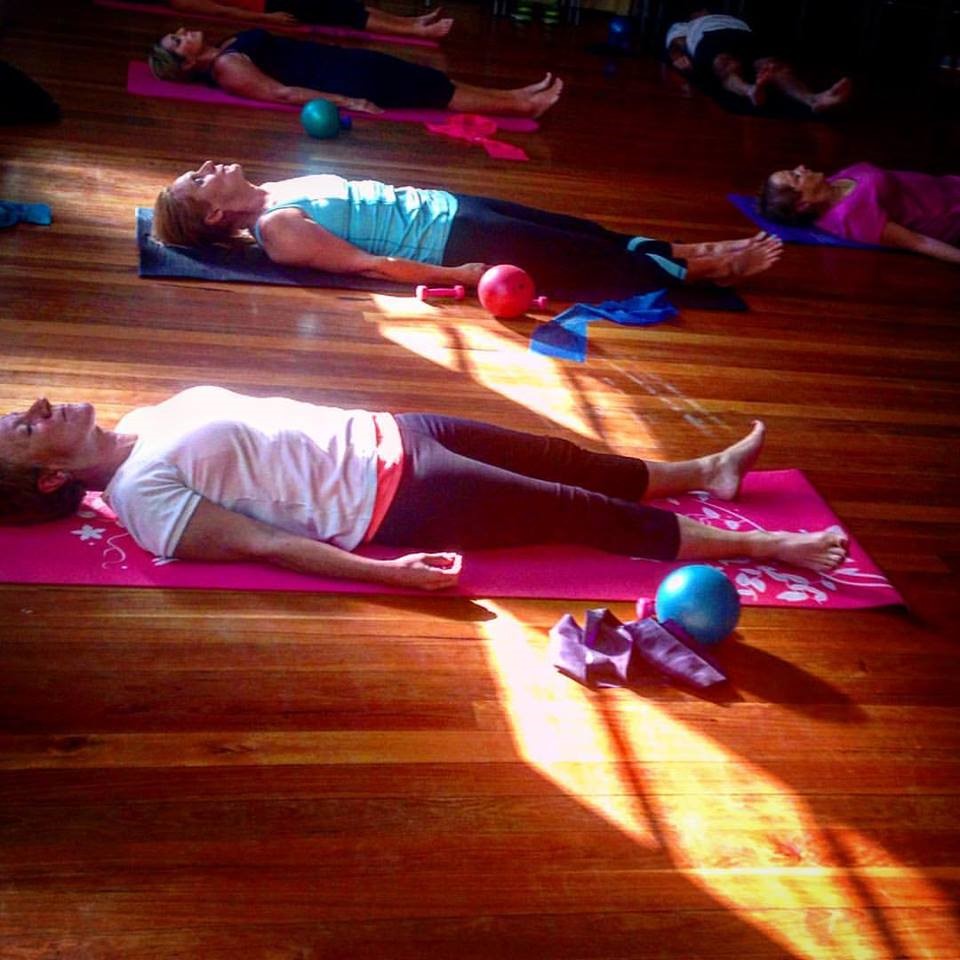Yoga Nidra is described as the waking sleep, as it can take the participant to a state of conscious deep sleep. It is a systematic method of inducing complete physical, emotional and mental relaxation.
The practitioner appears to be sleeping but the unconscious mind is functioning at a deeper level.
It is sleep with deep awareness. In normal sleep we lose track of our self, but in Yoga Nidra, while consciousness of the world is dim and relaxation is deep, there remains an inward feeling of lucidity and the experience may be absorbed and even recalled after.
Since Yoga Nidra involves effortless relaxation it is best practised with an experienced and trusted teacher, who can verbally deliver instructions.
I began to practise Yoga Nidra from the age of 17 at the Satyananda Yoga Centre in Manly, Sydney and Mangrove Mountains, Central Coast of NSW and in that time I was lucky to have been part of a workshop taught by the originator of the Yoga Nidra technique, Swami Satyananda, (now deceased).
More recent research studies by Richard Millar over the past 15 years has proven that the reductions in stress symptoms occurs with regular Yoga Nidra practise amongst all ages.
As I began my Fitness, Wellness and Teaching career I made Yoga Nidra part of a regular practise in schools as well as Fitness Classes.
This became part of every program I still teach with all ages. I have found over the years as stress levels increase more and more people request Yoga Nidra and even ask for a longer session.
The scientific studies have shown that people who practise Yoga Nidra experience better sleep generally, are more productive and less stressed.
In our cities across the world we live in an over stressed, over stimulated environment and this is not going away.
The result of this is people are feeling chronic exhaustion, adrenal burnout and daily fatigue and the stress of having to cope with this while looking after self and possibly a family, earn an income, provide daily living requirements and get enough ‘me’ time means … total burn out is fast approaching.
Yoga Nidra is a simple, practised and researched method that will help address all these issues.
In a classic Yoga Nidra practice, the practitioner lies on a mat/floor on their back with arms away from the body and palms turned upwards. In Yoga terminology, this is called Shavasana or corpse pose.
Feet should be separated to approximately hip width apart, and toes falling outwards. Eyes remain closed throughout and adding a lavender pillow over the eyes will aid the sense of complete relaxation.
It is best if the body is lying symmetrically. A good way to do this is to imagine a centre line running from the souls of the feet to the crown of the head.
This position is said to aid relaxation and influence the consciousness and prepares the mind/body for complete relaxation and letting go. It is also said it will balance the flow of life force or Chi throughout the body.
When I teach Yoga Nidra I include a focus on Intentions, which helps realising a resolve or something you want to achieve in your life I say “See it, Say it to yourself, Feel what it is like and Make it happen”.
I invite people to repeat this several times silently before moving into the verbal instruction of relaxation of muscles and body through naming e.g. feet, legs, torso and so on and then repeat the intention when coming out of deep relaxation.
I also focus on breath before and after the deep relaxation.
Your Intention could be as simple as wanting more love in your life or being kinder to yourself, or something very specific like a great new job or giving up alcohol or smoking.
People who practise Yoga Nidra and Intention say by repeating an Intention to themselves have found that by being in this relaxed state helps it take root in the unconscious.
This could also be called a post-hypnotic suggestion. People have also told me that they have achieved much after practising the combination of Yoga Nidra, Intention and importantly Mindfulness, by creating the moment they are in and letting go of sounds around them and daily stresses in as little as 10 minutes a day.
This practise has had profound results.
Sessions can run from as little as 10 minutes to an hour or more.
May all your positive intentions come true…….. J
You can find much more information on living a holistic lifestyle in these free magazines and on our YouTube channel.
 Jill Healy-Quintard of Body and Balance Fitness and Wellness
Jill Healy-Quintard of Body and Balance Fitness and Wellness
is a specialist in Mind/Body connection of the benefit of exercise. She offers classes, training and one on one sessions in Pilates, YogaPilates Fusion®, Yoga Nidra, ChiBall Method, TribuGROOVE, ZUMBA Fitness, BodyBarre® and STUDIO Pilates.






